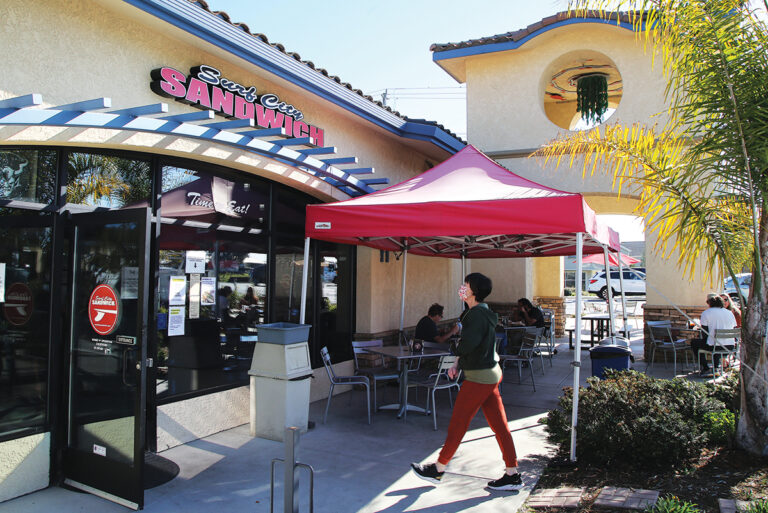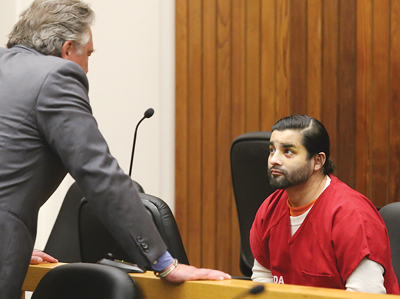I never thought I’d be looking for romance on my phone at 40 years old. I thought I had already found the love of my life 10 years earlier, with whom I had an extraordinary child and exchanged wedding vows.
I was looking for that love I had lost, but I could be picky. And my daughter was part of the equation. Anyone I matched with also had to be someone I could imagine bonding with my five-year-old. I’d watched dozens of “how-to” YouTube videos on French braiding hair, which was a skill constantly demanded of me, in addition to painting tiny fingernails—most polish usually ended up on her cuticles and fingertips, but she didn’t mind. I looked away from my phone screen, down at the Barbies strewn across my living room floor along with the remnants of my daughter’s blueberry muffin breakfast. My little girl was the one ray of light in my life that always shined brightly.
As I approached hour number two on the dating app, my eyes began to glaze over. Before tossing in my towel for the day, I noticed a small heart icon on my phone screen, which indicated activity. Not one, not two, but three women had selected my profile as a “match.” The first two women were quick passes, but my thumb froze before tagging out the third woman, Mindy. She appeared attractive—shoulder-length amber hair—and more importantly, I didn’t spot any red flags on her profile; she kept it simple: a 35-year-old elementary school librarian who lived in Santa Clara. The “children” category was left unanswered on her profile, but other than that, I thought, “Why not?”
As soon as I accepted Mindy’s “match,” my phone pinged, alerting me that I had a personal message.
“The photo of you and your daughter is so adorable,” Mindy wrote.
Mindy had met my initial prerequisites, and she had already shown interest in me with a personal message that even acknowledged my daughter. Score! I felt something I hadn’t thought about for a long time; the feeling of possibility.
The process moved quickly from there. Mindy seemed well-versed in this mysterious world of online dating that I had just dipped my toe into. She suggested we exchange phone numbers. She then proposed we send each other real-time selfies to verify we were the same people displayed in our profiles.
Before I was able to take a selfie, I received Mindy’s. It did indeed match her profile photo. 30 seconds after I sent my photo, my phone rang.
“Hi?” Mindy said. She spoke in a way that made everything she said sound like it needed to be punctuated with a question mark, but her tone was merry. I imagined her smiling on the other end of the phone. She was also giggly. I wasn’t sure how I felt about her enthusiasm. We’d never met, yet she sounded like a schoolgirl with a crush. I equated it to nerves.
“Are you free tonight?” She didn’t waste any time, which was fine with me.
“I am,” I replied.
And just like that, a few hours after my inaugural foray into online dating, I had my first first date in 10 years with a woman I knew next to nothing about. The plan: dinner in Santa Clara—a city I knew very little about.
I dusted off my bottle of Cool Water, which hadn’t been used since my wedding day, and lightly trimmed my beard.
Why should I trust this person? Why does she trust me? Was it faith or desperation? It may have been a little of both. I’d always been a romantic. I was the kind of guy who fell in love with the idea of love. It was a blessing and a curse.
I was about 15 miles away from Mindy’s house when my phone rang, according to my navigation. It was Mindy.
“Where are you?” Her matter-of-fact demeanor sounded like we had known each other for years.
“I’m about 15 minutes away.”
“Okay, I’ll see you soon?”
Before I had the chance to agree, she hung up. A few minutes later, my phone rang again. It was Mindy. Again.
“You almost here?” She sounded like a bored kid bugging her parents during a road trip.
I tried to answer politely, without sounding like I was beginning to get irritated, as I navigated through Silicon Valley rush hour while following directions to somewhere I had never been.
“I’ll be there soon,” I said. “I need to pay attention, so I don’t miss your exit.”
“Okay. Bye.” Click.
When I pulled up in front of Mindy’s house, I saw her standing in the driveway drinking a beer, pretending that she wasn’t aware of me. She wore blue jeans and a black tank top, exposing a collage of tattoos coloring most of the space on her shoulders and upper arms. Her wavy, amber hair had more of an orangey tint in person. She had prominent bangs and piercings that lined the entire perimeter of both of her ears. I didn’t mind the tats or the piercings, but I didn’t know how I felt about the well-worn, sky-blue fanny pack she sported. It sagged slightly towards the left side of her hip.
“Mindy?” I said as I shut my car door.
“My neighbor gave me a beer,” she said. “I don’t even want it. You want some?”
“I’m good,” I said.
I had stopped for flowers—a bouquet of purple tulips—on the way and picked up a decent bottle of South Monterey County Merlot. It was a good move.
“Nobody’s brought me flowers before,” she giggled.
Mindy then told me that she had two daughters who lived with her full-time; a 13-year-old who recently came out, and a 10-year-old. They were inside the house, which explained why she met me outside. Understandably, she didn’t want her daughters to meet a guy she hadn’t even met yet. The small-framed woman put the beer down in the middle of the driveway.
“I’ll be right back,” she said. “I’m going to put the flowers in water.”
She hurried back with a pair of wine glasses.
“We can drink wine at the cemetery?” Mindy suggested. “It’s not very far, so we can just walk.”
I didn’t feel like drinking wine at a cemetery; it reminded me of something I may have been game for in high school. I deflected the cemetery suggestion by offering a counter-proposal.
“How about we save the wine for later and get some dinner?”
Mindy nodded.
I grabbed the wine and glasses and tried to look Mindy over without being too obvious.
That goddamned fanny pack! It was like the disfigured eye in Edgar Allan Poe’s “Tell-Tale Heart.” Before she sat down in my car, she shifted the sky-blue pack from her hip to her lap and unzipped it. She dug around in there while looking straight ahead, and pulled out a white, oval-shaped pill, popped it into her mouth and gulped the last of the beer. It was too early to tell, but I worried that I might be on a date with a train wreck. What the hell did I get myself into?
“Sorry if I’m a little loopy,” she said. “I’m taking Vicodin because I reinjured my ankle yesterday.”
“What happened?” I asked.
“I took one of those steps when your ankle just gives out and bends the wrong way, you know?”
Unfamiliar with Santa Clara, I asked her for a dinner suggestion. I hoped for an off-the-beaten-path spot where we could get to know each other. Mindy wanted the opposite.
“How about California Pizza Kitchen?” she said. “It’s at Valley Fair, near Santana Row.”
California Pizza Kitchen at a ginormous mall during peak dining time on a Friday night?
“Okay,” I said, trying to hide any cringing.
“I fucking love their chicken piccata,” Mindy balanced the empty beer bottle between her knees and took another plunge into that fanny pack. She pulled out a weed vape. I had figured out the fanny pack’s purpose: a carry-on pharmacy.
“You mind if I take a hit?” Mindy had already released a plume of smoke before I had a chance to answer.
I tried to keep up with Mindy as she slithered through the sea of people who packed CPK. She yelled back to the hostess that we were going to the bar. The smell of overcooked garlic intertwined with loud chatter in a smorgasbord of languages was sensory overload. So much for a quality conversation.
Mindy wedged herself into a spot with two stools, and we ordered drinks. She opted for an inexpensive Chardonnay, and I went with a margarita. I noticed that Mindy began eyeballing every tabletop in the joint, zeroing in on the bread baskets and saucers of olive oil with herbs for dipping.
“Excuse me?” She blurted out in the direction of several servers zooming by, balancing hot plates for other tables.
“One moment,” a faceless voice responded in the distance.
Mindy looked annoyed, as if she felt like there had been a plot devised against her by the entire CPK franchise. She turned her anger toward another busy server rushing by.
“Sir! Um, why didn’t we get any bread?” Mindy asked.
“One moment,” the server said.
Mindy went on about the bread and the olive oil for dipping.
“How could they?” She exclaimed.
I wondered if the cocktail of substances she ingested had anything to do with her odd behavior or if this was how she always was. A server returned with our drinks, and yes, a basket of complimentary bread with the olive oil for dipping.
Mindy went to town on that bread as if she had been living in a refugee camp.
“Want some?” she asked between chews.
“I’m okay, thanks.”
“I love this shit,” she said before diving in for more.
Mindy sipped her wine after reducing the basket of bread to a few crumbs. She looked up to a group of waiters speeding off in opposite directions.
“Excuse me!” She shouted.
I inhaled my margarita, hoping it would take the edge off. The pizza ovens were directly in front of us, delivering a constant flow of hot air, which added to my discomfort.
“Excuse me!” Mindy repeated, holding her empty glass up as another cluster of busy servers whizzed by.
She eventually flagged down the guy working the pizza oven.
“Sir! Can you help us? We’re out of bread, and I need a wine refill!”
The guy didn’t respond. He just stared back at her blankly with the look of someone who didn’t understand a word she said. Mindy held the empty bread basket and her empty glass about an inch away from the poor guy’s bewildered face.
“I get your waiter,” he said in broken English.
“I can’t believe this!” Mindy turned to me. “You’re embarrassed, aren’t you? I’m just starving!”
I forced a smile. I wanted a magic remote control so I could fast forward to the end of the night, but Apple hasn’t invented that yet.
Maybe this is what dating is like nowadays, I thought. Or perhaps I just should have swiped left on Mindy.
Either way, I had to tough it out.

When a waitress came over to take our orders, Mindy had a lot to get off her chest, mainly centering on the breadbasket. The waiter didn’t pretend to care or even listen; she visibly rolled her eyes as Mindy went on and on. That seemed to really set my date off.
“Just get me the manager!” Mindy demanded.
She turned to me and placed her hand on my forearm. “Sorry to do this on our first date.” A Latino man wearing a black chef’s uniform and a ubiquitous food-stained apron walked out from the back kitchen area. Beads of sweat covered his forehead, and he had a pencil behind his ear.
“How can I help you?” he asked, staring directly at me. I tried to discreetly pantomime a motion, trying to move the guy’s attention towards Mindy. I didn’t want to be associated with the headache, but Mindy ended up taking care of that for me.
She slid off of her barstool, moved her fanny pack to the left side of her hip, and walked to the end of the bar, where she was able to have a one-on-one conversation with the guy, who probably had no time for this. I tried to ignore the conversation, but overheard most of it. Mindy carried on about being ignored and the lack of bread and the waitress who rolled her eyes at her. It was an exhausting diatribe. She also provided unnecessary information about being on a first date—when she pointed me out, I slinked down on my stool as low as possible, trying to appear uninvolved. The manager knew he wasn’t dealing with someone rational, but remained calm, never interrupting Mindy or making excuses for his staff. He just crossed his arms and said nothing as she continued to speak in one perpetual run-on sentence.
“I’m sorry you are having such a negative experience, miss,” he said. “I’ll make sure you get more bread right away, and your waitress will bring your orders out as soon as they’re ready. Please let me know if there’s anything else I can do.”
Mindy returned, looking somewhat satisfied, and the manager retreated to the back area of the kitchen.
“They’re going to give us one of our meals for free,” Mindy said.
That was a part of the conversation I hadn’t overheard. Now I had to worry about the possibility of eating food covered in mystery, off-menu bodily fluids kindly provided by our waitress. She most likely had been made aware of Mindy’s not-so-glowing feedback. But, for the remainder of the meal, our basket of bread was full. And Mindy’s glass of Chardonnay was bottomless.
After many years away from the dating scene, I knew that I might have been rusty in the getting-to-know-you-chitchat department, but I didn’t expect that my date would talk more to the restaurant staff than me. I don’t remember what I had for dinner, but I remember Mindy licked her chicken piccata plate clean. She didn’t seem worried about the potential of foreign substances added to her food by the eye-rolling waitress. Mindy asked to have the remaining bread bagged up and the olive oil for dipping. I paid the check, grabbed the baggie and maneuvered through the bustling space like Barry Sanders zigzagging towards the end zone. Mindy grabbed onto my arm with both of her hands so she wouldn’t lose me.
“You hate me, don’t you?” Mindy asked. “I’m usually not like this. I think it’s the Vicodin?”
“It’s okay,” I said.
I took a lesson from the California Pizza Kitchen manager’s playbook and spoke as little as possible, responding to Mindy’s questions using one-word answers or nods. While I was eager to call it a night, Mindy’s petite hands wrapped partially around my forearm gave me a buzz, reminding me just how much I craved a woman’s touch. Once we had escaped the confines of the crowded restaurant and were outside, her grip on my arm remained firm. She pulled me closer and brushed her hip against my leg as we walked to the car. When I looked down at her, she stared back with large brown eyes. I also forgot how it felt to have a woman look at me like that. I relished that feeling, but I still wanted to get this woman home and close the book on Mindy forever.
It wouldn’t be that easy, though. When I opened the car door for her, Mindy’s empty beer bottle fell to the ground. Luckily, it didn’t break.
“Oops,” Mindy giggled, squatting down to pick it up. She looked around for a trash can before deciding that her only option, rather than taking the bottle with us and throwing it away when she got home, was placing it on the hood of the truck parked next to us. The kicker: She was unaware—I was too, at first—of the behemoth of a guy sitting inside the truck. On top of that, his window was down. The guy was either hard of hearing or very stoned because he had no idea that a beer bottle had been placed on the hood of his vehicle.
“Oh shit!” Mindy covered her mouth when she also realized the truck wasn’t vacant. I thought about grabbing the bottle, but decided to let it be and hope for a clean getaway. The guy looked like the type who wouldn’t have the patience to hear an explanation. There really wasn’t an explanation anyway. So, I left the bottle sitting undisturbed on the truck’s polished hood. I shut Mindy’s door gingerly, sprinted around to the other side of the car, jumped in and drove away without incident. Mindy let out a nervous giggle as she fished out a Vicodin and her vape from her sky-blue fanny pack. I glanced in my rearview at the bottle, sitting undetected on the truck’s hood. I also noticed a CPK bag near the truck’s door on the ground.
“Shit! I think I left the bread and olive oil,” Mindy said after hitting her vape. I didn’t say anything. I just made my way towards her house.
The following day, I deleted my account from the dating app, but I signed up again about a month later. It’s been a couple years since the “Mindy” experience, but it has stuck with me like a painful ingrown hair. Also, I’m still single. I have tried a few other apps—there are so many now, who knows which might hold the key to my match?
It’s become exponentially more difficult with the added variable of a global pandemic. However, my search has continued. There have been dozens of first dates and second and third dates. There have been month-long mini relationships and the occasional bizarre encounter. One prospective date told me during our introductory Facetime that she feared I might “kidnap her because I’m a bad man” with a lengthy arrest record. Before realizing the woman was into BDSM, I Googled myself in a panic, wondering where she found this damaging false information about me. There have been potential leads that turned out to be prostitutes, and others who were part of scams. The list goes on.
The whole process has been discouraging, expensive and exhausting. But I won’t settle for anything less than a true teammate, a soulmate, someone who will be on my side through the good, the bad and the ugly. Sometimes, I wonder, “Is it me? Am I too picky? Am I destined to be alone for the rest of my life?” In the end, I don’t think so. Decades before dating apps, Marvin Gaye was interviewed about finding love. His response: “Finding your soulmate takes a lot of looking.” That keeps me going.





















